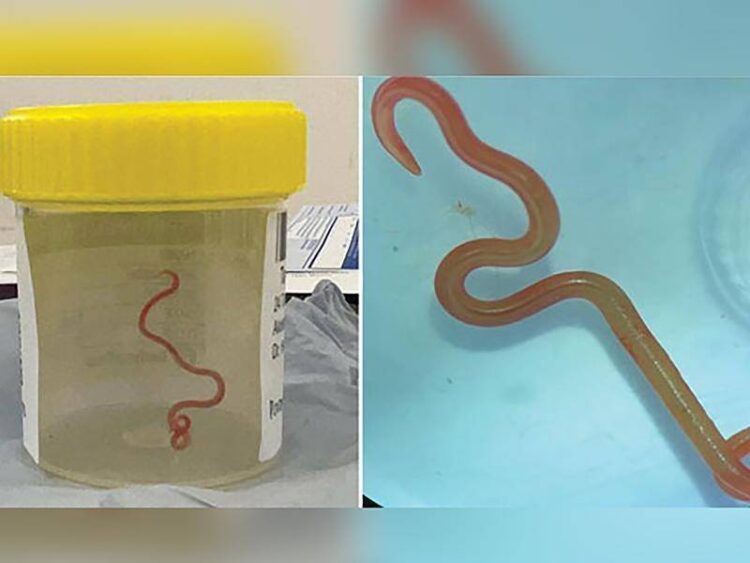By Samantha Jones-
In a stunning medical revelation, a 64-year-old woman from New South Wales, Australia, emerged from a set of mystery symptoms to discover an unsettling truth: a live parasitic worm had taken up residence in her brain, marking a world-first occurrence that has baffled experts and defied conventional medical wisdom.
The saga began in late January 2021 when the woman was admitted to a local hospital, besieged by a series of seemingly unrelated ailments. Abdominal pain and bouts of diarrhea were the initial harbingers of her predicament. As her condition progressed, her distress extended to encompass respiratory troubles, and medical scans illuminated concerning anomalies within her lungs and liver.
However, her ordeal was far from over. The woman’s health continued to deteriorate, ushering in a cascade of symptoms that encompassed forgetfulness and depression, wrapping her in a web of uncertainty and alarm. It was within this perplexing tableau that medical professionals embarked on a journey to unlock the enigma that had befallen their patient.
The turning point arrived when an MRI scan was conducted, offering an initial glimpse into the core of the mystery. Medical practitioners, initially suspecting a tumor, were poised for a complex battle against a formidable foe. However, what lay beneath the surface was a revelation that transcended even the most imaginative medical hypotheses.
Upon undertaking a biopsy in June 2022, the medical team was confronted with an astonishing discovery that defied categorization. Within the right frontal lobe of the patient’s brain, a realm traditionally associated with higher cognitive functions and decision-making, resided a live parasitic worm. Its dimensions alone—approximately 80 millimeters (3 inches) in length and 1 millimeter in diameter—struck a discordant note, ushering in an era of unprecedented medical curiosity.
The situation took on an almost surreal quality as the medical team grappled with a reality that stretched the bounds of conventional knowledge. Surgeon Hari Priya Bandi, who was instrumental in the biopsy, voiced a sentiment that echoed the collective disbelief of her colleagues: “We don’t find things that are surprising and when we do, that’s just unheard of.” The implications of the situation left both medical professionals and the general public in a state of astonishment.
Dr. Bandi recounted the pivotal moment when the worm was unveiled, describing how its wriggling presence bore a deeply unsettling effect. “I then picked it up and just went ‘look at it, what is that… It’s moving. Let’s take it out,'” she recounted. The incongruity of a living entity thriving within a space traditionally associated with cognitive processes left a profound impact. “There was a moment for me for just feeling a bit nauseated,” she added, encapsulating the visceral reaction to this medical anomaly.
The worm’s journey into the woman’s brain remains shrouded in mystery, leaving medical experts grappling for plausible theories. While there isn’t a definitive explanation, several scenarios emerge as possibilities.
The transmission of parasites into the human body often transpires through exposure to contaminated food, water, or vectors like mosquitoes. In this instance, it’s conceivable that the woman ingested or encountered a vector that harbored the parasitic invader, allowing it to breach the barriers of her immune system and establish a unique abode within her brain.
Yet, the situation’s complexity necessitates acknowledgment that this case, while unprecedented, serves as a reminder of the intricate web of nature’s intricacies.
As the medical world grapples with the implications of this anomaly, one thing remains clear: the woman’s journey through this medical marvel defies simple categorization ,and stands as a testament to the boundaries of human understanding.
In a journal, researchers hypothesized that the woman, who lived near a lake and “often collected native vegetation” to use in cooking, and she may have inadvertently consumed eggs containing the parasite either directly from the vegetation or indirectly from contamination from her hands or other kitchen equipment.




